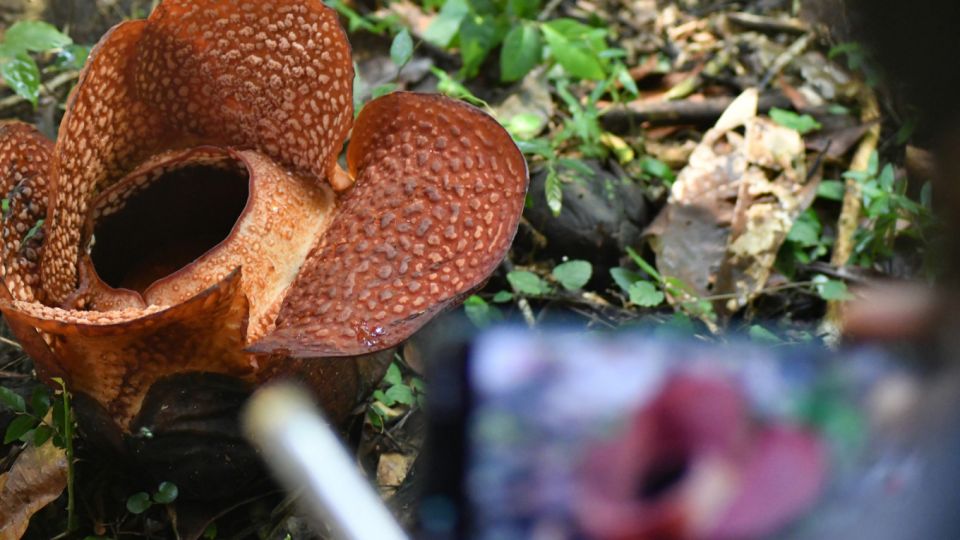September 16, 2022
JAKARTA – The Bogor Botanical Gardens in West Java recorded a milestone on Tuesday when it found that a rafflesia (Rafflesia arnoldii) had bloomed in the iconic gardens, far from its native forest habitat in Sumatra.
The giant flower is also known as the corpse flower, as it emits a foul odor resembling decomposing flesh to attract carrion-feeding flies, which help pollinate it during its flowering period of five to seven days.
Sofi Mursidawati, a rafflesia researcher at the gardens’ Plant Conservation Center, has been trying to cultivate the flower outside its native habitats of Sumatra and the island of Borneo for the last 16 years.
“This [bloom] is no more than 60 centimeters in diameter, but I have ascertained that it is a Rafflesia arnoldii flower,” Sofi told The Jakarta Post on Wednesday, with a big smile.
The botanical garden has successfully grown Rafflesia patma, another member of the Rafflesiaceae parasitic plant family, which has smaller flowers than Rafflesia arnoldii (R. arnoldii).
R. arnoldii produces the largest flowers in the world, with a fully developed flower weighing up to 11 kilograms and measuring almost 1 meter in diameter.
Sofi said the corpse flower had bloomed in the location where she conducted research on the plant in 2006. “I sowed hundreds of Rafflesia arnoldii seeds at the time, right on the banks of the Ciliwung River, which passes through the gardens,” she said.
All members of the Rafflesiaceae plant family are parasitic and have special organs that attach to the vines of the Tetrastigma plant, living directly off the host plant through a threadlike network with the flower the only visible part of the plant.
Sumatra is known to have 11 species of the Tetrastigma genus, which belongs to the grape family.
“Interestingly, this R. arnoldii is growing on a Tetrasigma lanceolarium that was planted in the gardens in 1953 as a result of a seed exchange with the United States,” said Sofi.
The Rafflesia genus has 33 known species that are found only in the rainforests of Southeast Asia. Out of the 14 species native to Indonesia, 11 are endemic to the island of Sumatra. These unique plants are threatened by habitat destruction as well as poaching for medicinal purposes, and several species are critically endangered.
Deforestation has spread rapidly across Sumatra and poses a serious risk to the island’s native flora and fauna.
Sumatra reportedly had 25 million hectares of natural forest in 1985, but only 11 million ha remained just 31 years later in 2016, with most lost to deforestation.
Studies have found that suitable habitats for cultivating R. arnoldii occur mostly in the provinces of Lampung, Bengkulu, West Sumatra and Aceh along the Bukit Barisan mountain range, which spans from Lampung in South Sumatra to Aceh. The environmental variables crucial to the development of the corpse flower and its Tetrasigma host plants are mean temperature, slope, elevation and soil quality and type.
A December 2021 article in National Geographic on Sofi noted that the botanist was the first to successfully cultivate Rafflesia patma through grafting at the Bogor gardens.
Efforts have been made to cultivate R. arnoldii outside its native habitat to conserve the rare species since 1818, but all have been unsuccessful – until this week. (dre)


